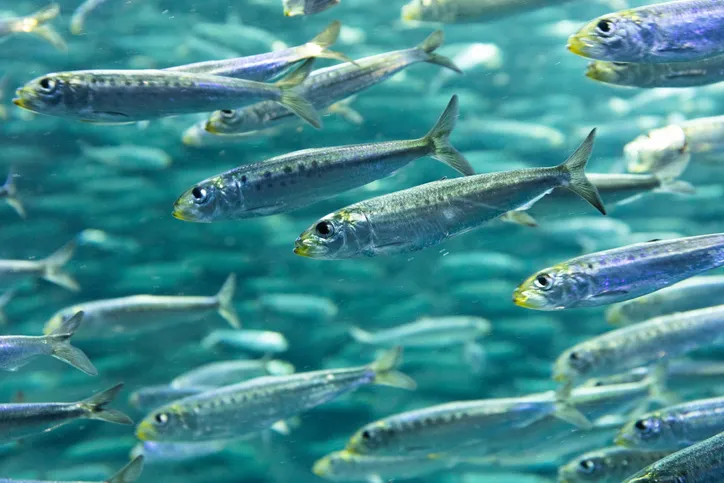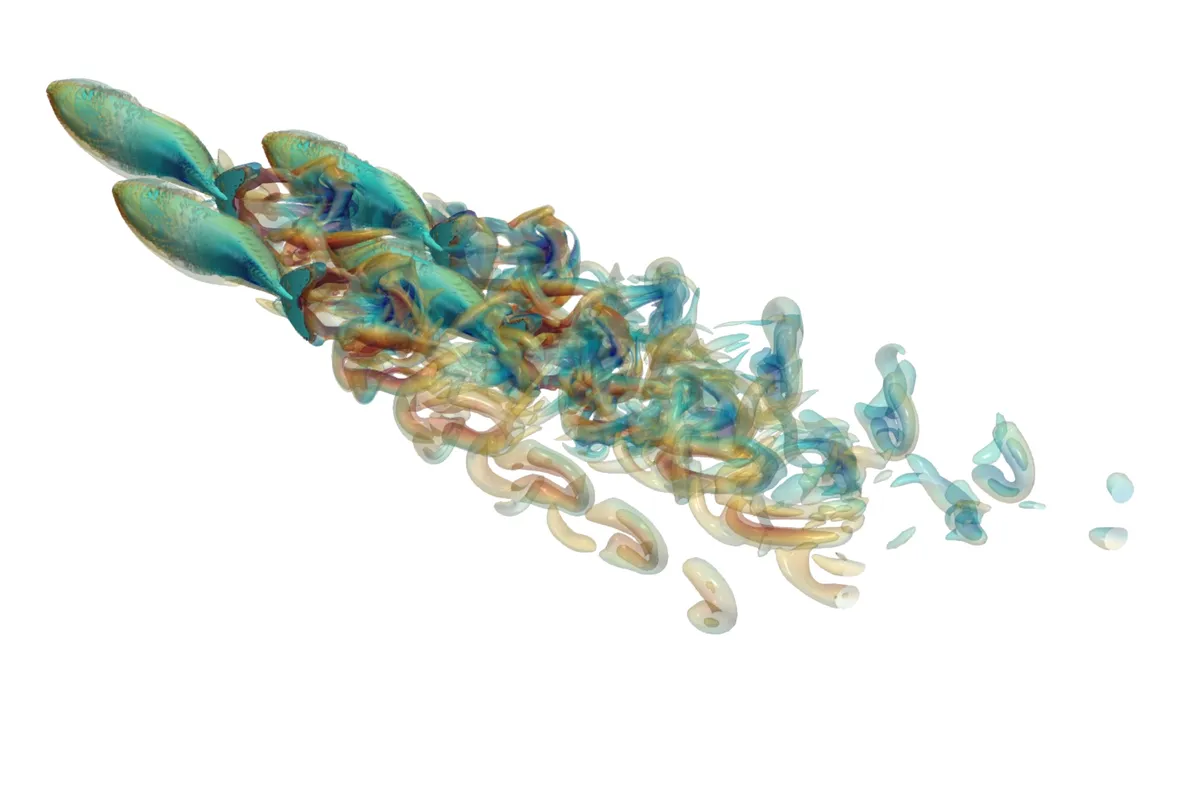Engineers at Johns Hopkins University have found that the formation of a school of fish significantly affects how noisy it is. If they move together "in just the right way" a school of seven fish can sound like a single fish.
Ji Zhou and Rajat Mittal, the authors of the new study published in the journal Bioinspiration & Biomimetics, are part of a research group interested in fluid dynamics and the biomechanics of bio-locomotion. “This includes flight of butterflies, mosquitoes and moths, flying bats, and swimming animals such as dolphins, humans and fish,” says Mittal.
They were interested in how fish benefit from swimming in schools: is it more efficient, can they swim more quickly and do certain formations give more advantages?
Mittal and his colleagues were intrigued to find out the degree to which school configuration impacts underwater noise, and thus the safety of fish around predators such as sharks, who have very acute hearing.

To answer this question, they set up computer models to simulate how noise is created if fish swim together in different configurations.
“We started by creating a 3D model of a common mackerel, incorporating dynamic movements to simulate natural swimming behaviour,” says Mittal. This allowed them to see what happened with different numbers of fish swimming in different positions.
When they evaluated the intensity of sounds in these different scenarios, they found that how closely fish swim together and how they sync their tail flapping has a significant impact on how noisy the school is.
“In fish like mackerel, each tailbeat swings left and right, propelling the fish forward but also producing significant sound,” explains Mittal.
“Sound is a wave and two waves can either add up if they are exactly in phase or they can cancel each other if they are exactly out of phase.” So, fish swimming in pairs with their movements synchronised – flapping their tail in opposite directions at the same time – they cancel out each other’s sound waves, thus swimming more quietly, without impacting how efficiently they were swimming.
The models showed that, in this way, a school of nine fish could generate less noise than two individual fish.
“We also showed that in a large school of fish, even if the fish move their tails without any particular coordination, they can still reduce the net sound from the school,” Mittal added.


As well as helping us understand how 'acoustic stealth could keep schooling fish safe – because predators might think they could only hear one fish instead of a whole school – this could also inspire quieter submarines and underwater vehicles.
“Traditional underwater vehicles use noisy rotational rotors for propulsion,” says Mittal. But copying this stealthy synchronised swimming technique could help vehicles to operate more quietly without becoming less effective. “This could lead to the development of underwater vehicles that are both efficient and stealthy, drawing directly from the natural mechanisms evolved by schooling fish,” he explains.
Read more about the study: Effect of schooling on flow generated sounds from carangiform swimmers. Ji Zhou et al 2024 Bioinspir. Biomim
You may also be interested in:
- Fish Doorbell: The viral livestream that’s saving fish in the Netherlands
- There’s a fish in Tasmania with hands instead of fins, and scientists are about to save it from extinction
- It’s a slimy, prehistoric parasite with the mouth of an alien. And two fearless photographers are obsessed with finding it